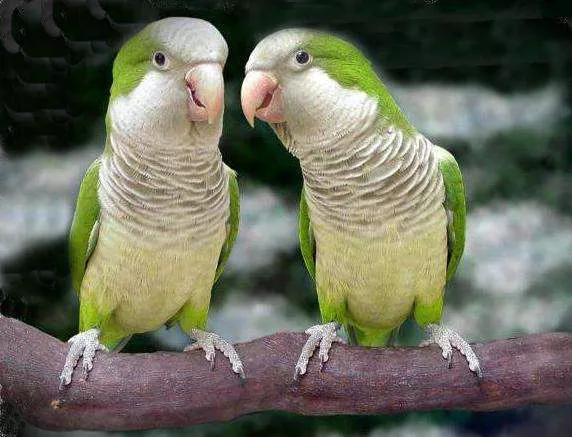Finsch’s parakeet (Psittacara finschi), also known as the crimson-fronted parakeet and in aviculture as Finsch’s conure, is a species of bird in subfamily Arinae of the family Psittacidae, the African and New World parrots. With its vibrant plumage, unique characteristics, and lively nature, this parakeet has captured the attention and admiration of bird enthusiasts worldwide. In this article, we will delve into the key features, habitat, behavior, and conservation status of Finsch’s Parakeet, shedding light on its significance in the avian world.
Physical Characteristics:
Finsch’s parakeet is about 28 cm (11 in) long and weighs 135 to 175 g (4.8 to 6.2 oz). The sexes are alike. Adults are mostly green that is yellowish on their underparts. They have a red forehead (the “front” of their alternate English name) and some red flecks elsewhere on their head. The edge of their wing and their outer underwing coverts are also red, often with an orange tinge. Their greater underwing coverts are yellow. The undersides of their flight feathers and tail are olive yellow. Their thighs usually have some red. Their eye is orange surrounded by bare white skin and their bill is horn colored. Juveniles resemble adults, but have little or no red on the head and none on the thighs. Their eyes are gray.
Distribution and Habitat:
Finsch’s parakeet is found from southeastern Nicaragua, on both the Pacific and Caribbean slopes of Costa Rica, and into Panama’s Pacific slope as far east as the Azuero Peninsula. It inhabits a variety of semi-open to open landscapes including woodlands, the edges of denser forest, secondary forest, ranchlands and agricultural areas that have groves of trees, coffee plantations, and towns. It can be observed at various altitudes, from lowland regions to foothills and even up to 1,800 meters (5,900 feet) above sea level.
Behavior and Vocalizations:
Social Nature: Finsch’s Parakeet is highly sociable, often found in small flocks or larger groups. These flocks engage in playful interactions, engage in communal roosting, and communicate through vocalizations and body language.
Vocalizations: Finsch’s parakeet is very vocal, especially in flight with “a jangling chattering” described as “klee-klee-chee-chee…”. It also makes “[s]harp squeaky notes and loud harsh calls” described as “scree-ah”. These vocalizations serve as a means of communication within the flock, during courtship displays, and for territorial defense.
Breeding and Conservation:
Breeding Behavior: Finsch’s Parakeet typically forms monogamous pairs during the breeding season, which usually occurs between February and June. They construct nests in tree cavities, using chewed wood and other plant materials to create a suitable environment for nesting and raising their young. The female typically lays a clutch of 3-4 eggs, which are incubated by both parents for approximately 23-24 days.
Conservation Status: Finsch’s Parakeet is categorized as a species of “Least Concern” on the IUCN Red List. However, habitat loss, deforestation, and illegal trapping for the pet trade pose potential threats to their populations. Conservation efforts focus on preserving their natural habitats, implementing sustainable land use practices, and combating illegal wildlife trade.
Ecological Significance:
Seed Dispersal: Finsch’s Parakeet plays a crucial role in seed dispersal as it feeds on various fruits and berries. By consuming and dispersing seeds, they contribute to the regeneration and diversity of plant species within their habitats.
Indicator Species: The presence or absence of Finsch’s Parakeet can serve as an indicator of the health and integrity of the surrounding ecosystem, highlighting the overall well-being of the habitats they inhabit.
Conclusion:
Finsch’s Parakeet, with its vibrant plumage, engaging behavior, and lively nature, is a true treasure of Southeast Asia. Its presence adds color and charm to the forests and woodlands it calls home. By understanding the characteristics, habitat requirements, and conservation needs of Finsch’s Parakeet, we can appreciate the importance of preserving the delicate balance of nature and ensuring the survival of this captivating parrot species for future generations to enjoy.


 Facebook
Facebook  Instagram
Instagram  Youtube
Youtube 